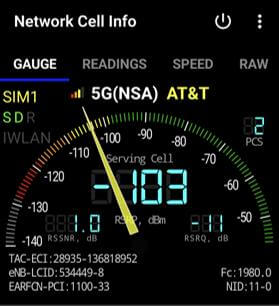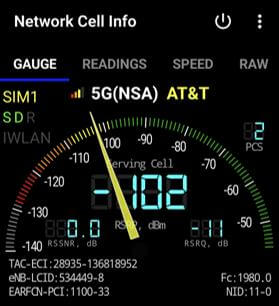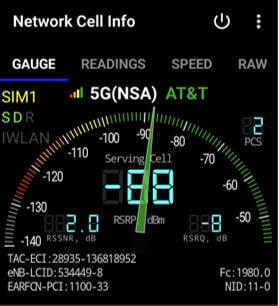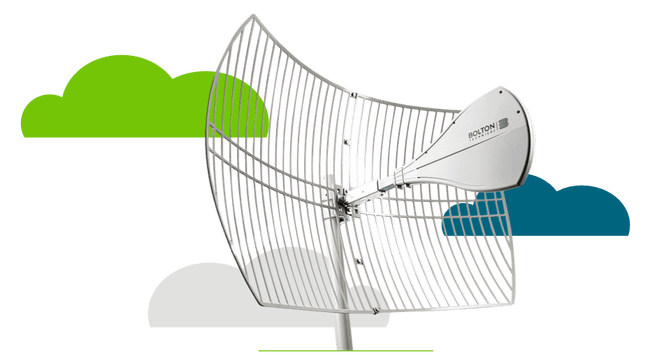
Meet the Bolton Blade 5G Vehicle Antenna
Get Better Signal on the Road with the Bolton Blade
Along with a powerful cell signal amplifier for trucks, a powerful outdoor antenna is a must for superior cellular connectivity on the go. After all, the external antenna is what captures available 5G and 4G signals for boosting. So, why wouldn't you want the best of the best?
Enter the Bolton Blade Trucker Antenna.
Introducing the Bolton Blade – A Powerful & Customizable Cellular Antenna for Trucks
The Bolton Blade is a high-gain, commercial-grade, 5G capable cellular antenna designed for trucks. Supported frequencies include:
| 5G Frequencies | 4G Frequencies |
|---|---|
| 600 MHz | 600 MHz |
| 850 MHz | 700 MHz |
| 1700/2100 MHz | 850 MHz |
| 1900 MHz | 1700/2100 MHz |
| 2500 MHz | 1900 MHz |
| 3700 MHz | 2300 MHz |
| 2500 MHz |
Measuring at about 2 feet, the bi-cone top, which houses all the important stuff, can easily rise above your and surrounding vehicle’s body. This allows the antenna to catch the strongest signal available. Pair it with any vehicle signal booster and receive stronger signals across all supported bands. The quick disconnected SMA-Female coax cable and adapter allow for easy setup and removal.
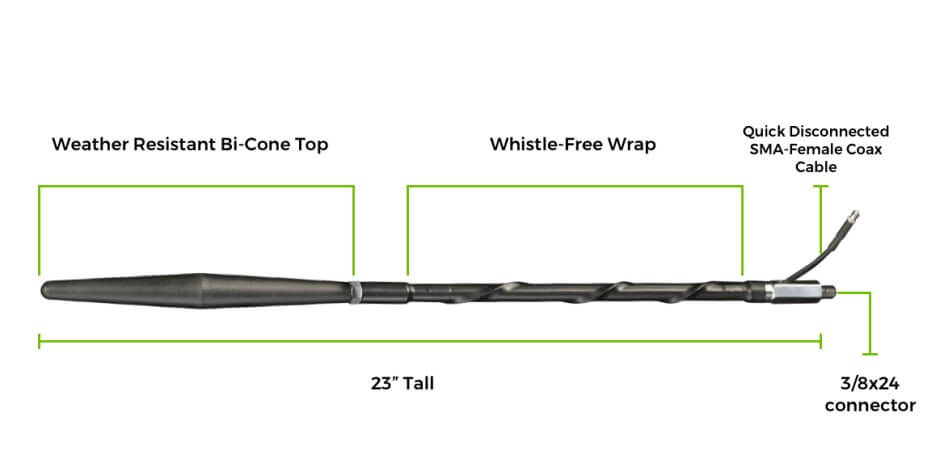
Many trucker antennas are top heavy, unstable, and whistle when driving at high speeds. Not the Bolton Blade. Lightweight and sturdy fiberglass mast ensures the antenna always remains vertical. No whipping back and forth. Coupled with an exclusive “whistle-free” wrap, you can enjoy long, quiet rides.
Unlike other vehicle antennas who can only be installed one way, the Blade features a bunch of different mounting options. It’ll fit all types of vehicles – from semis to pickups to SUVs. Choose from a:
- Custom Hood Mount – For hood installations. Custom mounting brackets designed for specific trucks are available for the perfect fit.
- Lip Mount – For hood or hatch door installations. If we don’t have a mounting bracket specific for your vehicle, this one can slide under the lip of your hood or hatch door.
- Mirror Mount – For west coast mirror or cleat bolt installations. While designed for semi-truck mirrors, it can also be used to install the antenna on the bed of your truck using a cleat bolt.
- Rack/Toolbox Mount – For rack or toolbox installations. The mounting bracket can hold two antennas. With the 90-degree torque, you can easily optimize placement.
How Does the Bolton Blade Compare to Other Trucker Antennas?
We tested the Bolton Blade in rural areas against comparable cellular trucker antennas. The same cell phone booster was used with each one. Before and after signal results were measured using the Cell LinQ Signal Reader. Here are the results:
Signal Strength (RSRP)
RSRP, short for Reference Signal Received Power, indicates signal strength. It’s measured in dBm (decibel-milliwatts) and expressed as a negative number. It typically ranges from -50 dBm (great signal) to -120 dBm (little to no signal). The closer you are to -50 dBm, the better.
| Carrier | Freq. Band | Existing RSRP (dBm) | Bolton Blade (dBm) | Competitor A (dBm) | Competitor B (dBm) |
|---|---|---|---|---|---|
| Verizon 4G | 13 | -98 | -85 | -87 | -85 |
| Verizon 4G | 2 | -110 | -101 | -102 | -102 |
| AT&T 4G | 2 | -108 | -99 | -99 | -115 |
| T-Mobile 4G | 2 | Not Registering | -98 | -99 | -100 |
| Verizon 4G | 4 | -111 | -106 | -108 | -109 |
| AT&T 4G | 4 | -112 | -93 | -93 | -96 |
| T-Mobile 4G | 4 | -114 | -101 | -102 | -107 |
| AT&T 4G | 5 | -110 | -101 | -102 | -103 |
| Verizon 4G | 5 | Not Registering | -89 | Not Registering | -92 |
| AT&T 4G | 12 | -102 | -81 | -81 | -83 |
| T-Mobile 4G | 12 | -107 | -90 | -90 | -88 |
*Not registering means the reader didn’t pick up the signal.
When it comes to improving signal strength, the Bolton Blade performed equal to or better than the competition across most bands. If you’re looking to get the best cell signal on the go, the Bolton Blade is a no brainer.
Signal Quality (RSRQ)
RSRQ, short for Reference Signal Received Quality, indicates cellular signal quality. It’s measured in dB (decibels) and expressed as a negative number. It ranges from 0 dB (excellent) to -20 dB (poor). The closer to 0 dB, the better quality of your cellular connection.
| Carrier | Freq. Band | Existing RSRQ (dB) | Bolton Blade (dB) | Competitor A (dB) | Competitor B (dB) |
|---|---|---|---|---|---|
| Verizon 4G | 13 | -9 | -11 | -12 | -10 |
| Verizon 4G | 2 | -8 | -9 | -9 | -7 |
| AT&T 4G | 2 | -10 | -13 | -13 | -14 |
| T-Mobile 4G | 2 | Not Registering | -8 | -7 | -10 |
| Verizon 4G | 4 | -10 | -12 | -13 | -12 |
| AT&T 4G | 4 | -12 | -7 | -7 | -7 |
| T-Mobile 4G | 4 | -9 | -7 | -7 | -7 |
| AT&T 4G | 5 | -10 | -13 | -16 | -12 |
| Verizon 4G | 5 | Not Registering | -8 | -9 | -7 |
| AT&T 4G | 12 | -12 | -6 | -6 | -7 |
| T-Mobile 4G | 12 | -9 | -8 | -8 | -8 |
*Not registering means the reader didn’t pick up the signal.
Sometimes, signal quality after boosting is inferior to the initial RSRQ, as shown in the chart. You might be wondering, why? Well, it’s because of signal loss. As signal travels through each signal booster component, starting RSRQ can decrease. Your environment also plays a role. Things like weather, trees, hills, water, and the like, continuously interfere with quality.
Looking closely at the chart, each antenna performed equal or better across eight frequencies. On those frequencies where the competition performed better, the Blade came in at second place. For a clearer picture, we calculated the RSRQ average for each antenna:
| Bolton Blade RSRQ Average | Competitor A RSRQ Average | Competitor B RSRQ Average |
|---|---|---|
| -9.8 dB | -10.2 dB | -9.9 dB |
While very minimal, the Bolton Blade offers slightly better signal quality performance within a small margin of error.
Gain
Antenna gain, measured in dBi, represents how strong a signal the antenna can send or receive in a specific direction. Most vehicle antennas are omnidirectional. So, higher dBi results in more reach to nearby cell towers, providing better signal booting on the go. Here is the maximum average gain for each antenna:
| Bolton Blade Average Gain | Competitor A Average Gain | Competitor B Average Gain |
|---|---|---|
| 2.86 dBi | 2.38 | 2.06 |
These averages were calculated using the max gain produced by the main frequencies current generation cellular signal boosters support. Said frequencies include 700 MHz, 850 MHz, 1700 MHz, 1900 MHz, and 2100 MHz.
Remember: the Bolton Blade also supports 600 MHz, 2300 MHz, 2500 MHz, and 3700 MHz 5G frequencies.
Results show the Bolton Blade offers a little bit more gain than the competition, meaning it has a little more reach. While it may not look like much, it can make a difference.
What About 5G Performance Results?
Unfortunately, the signal meter used does not read 5G frequencies. So, the results we have for 5G aren’t as thorough as those for 4G.
To test 5G performance, we used the Network Cell Info app. It measures signal strength and quality. Here are the results:
| Before | After | |
|---|---|---|
| Bolton Blade |
|
|
| Competitor B |
|
|
The Bolton Blade significantly improved signal strength and outperformed Competitor B. In terms of signal quality, it came close to Competitor B. So, even with 5G, the Bolton Blade seems to be the winner.
What’s Included in the Box?
All Bolton Blade kits include:
- Bolton Blade Cellular Antenna
- 1x Quick Disconnect Adapter
- 1x Dome Mount (Helps stabilize the antenna)
- Your Choice of Mounting Hardware (Custom Truck Mount, Lip Mount, Mirror Mount, or Rack Mount)
Where Can I Get the Bolton Blade?
The Bolton Blade not only offers great performance, but also offers a wide variety of mounting options. You can easily get your hands on one of these babies through our partner, SignalBoosters.com. If you wish to become a distributor of this awesome antenna, let us know.

For any questions regarding the Bolton Blade, don’t hesitate to call us at 1-888-987-2658. We’re here to help and get you on the road to superior signal. To view more of our awesome products, get a free copy of our Bolton Technical Product Catalog.







